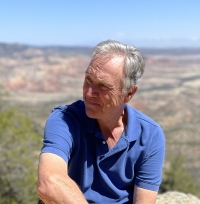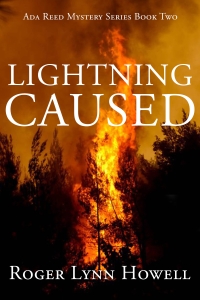The Best Writing Advice I Ever Got was from a Geologist
Bruce and I were friends at Boise State University, where he was a couple of years ahead of me in the geology program. He went on to a masters program at the University of Montana while I finished up my bachelor’s. The summer I finished my program I was hired as a junior geologist by a mining company exploring for gold in central Idaho. Bruce, now with a master’s, was hired by them as well. He was my supervisor. We camped that summer in the Yankee Fork valley, and we hiked out each day to map the geology of the basin. He would go one way, and he would send me another. We would meet back at camp in the evening and compare our day’s work over beers. The beers are not important to this story, but they richly populate my memories.
Anyway, to create a geological map, the investigator walks the ridges and hillsides marking down on a base map the various types of rock under foot and drawing lines—contacts—between the important rock types. To do it properly, the geologist must formulate a three-dimensional picture of the component formations; how they are superposed and folded, and how they are shifted in their positions or eliminated by faults. A geological map tells a long story of a small piece of the earth—of the environments that have come and gone there through time, of the sediments deposited and eroded and redeposited, of burials and exhumations, of times of fire and of ice. (These can be exciting stories, but mostly to other geologists.)
I was not doing well. It was my first job out of school and I was not building a geological map of the areas assigned to me. It seemed that I understood the rock types, and I recognized the faults and folds, but I was not putting it all together in a story. Each day I would come back to camp able to show Bruce just a few desultory inches of contact lines on my base map.
Bruce let me flounder for nearly a week. Then one morning as I was readying my pack for another day of mapping, he stepped over to me holding up a pencil. It was the old yellow Ticonderoga type we haven’t seen in years. It had a sharpened point and a rubber eraser on the other end. And that was the detail he emphasized to me. He said, “Roger, your pencil has two ends to it. Use them both.” That’s all he said. He went one way and I went the other.
That day I went ahead and drew some lines. And then I walked some more, looked back, and erased those lines and drew them a little differently. I crossed from one side of the ridge to the other drawing and revising, sometimes dashing the lines where I was uncertain, and sometimes changing dashes to solid lines. I worked both ends of my pencil that day (in truth it was a mechanical, 0.5 mm, Koh-I-Noor Rapidomatic), and worked them to such an extent that I probably knocked down a whole sixpack that evening. But more importantly, I was able to show Bruce a small bit of real geology.
I did not become a better geologist that day, I became a better mapper. The rubber end of my pencil (in truth a Pentel Clic retractable eraser) gave me the confidence to try out ideas, knowing that I could change my mind if at the next outcrop a better idea presented itself. My geological instincts did not change, but I found that the lines on paper helped me think more clearly about the geology, and then that led to better lines, and so on. Mapping and geological understanding integrated into a single process.
Over a four-decade career I employed what I learned that summer—not just in mapping, but in formulating conceptual models, interpreting test results, and writing reports and papers. Always I made a point to start writing, or drawing, or graphing from the get-go. Those early words and lines were never meant to survive to the end, but were considered “working drafts,” from which re-thinking and revision, and yes, sometimes utter rejection of ideas, flowed easily.
And that, now, is the advice that I give for writing fiction. Just as I could not start mapping until I had lines on the base map to shift around and reflect back to me my ideas, today I cannot really start writing until I have words on paper (in truth a Dell U2410 digital monitor) to work with. In my writing group and elsewhere I hear aspiring writers say they are not ready to start writing their story because they haven’t fully developed their ideas. That is so wrong! You need to put down words early in order to organize and develop your thoughts. You need words to speak your ideas back to you, and to argue with you, or maybe words to give you the confidence to fully pursue or abandon an idea. And then you need to erase those words and write them better.
And so imagining a story and writing it, to me, become an integrated process. The first, nascent ideas are given words—usually clunky, colorless things. But then those words draw out new and richer ideas, which become better words. Imagining a story is what we do, but without written words imagining a story is just daydreaming.

.png)
